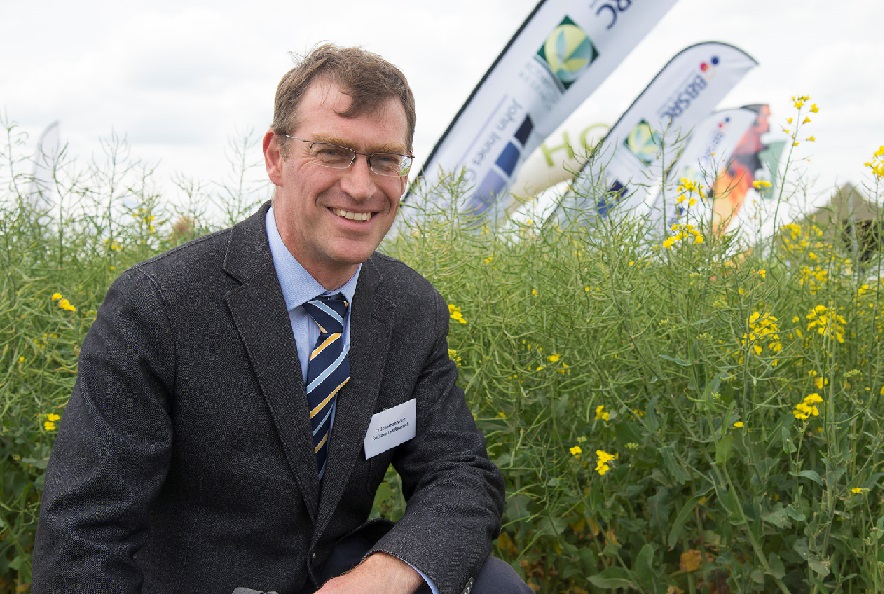
Oilseed rape crops are not yet safe from the yield robbing scourge of Sclerotinia, warns Jon West, Senior Plant Pathologist at Rothamsted Research. New techniques of SYield live-time spore monitoring to identify infection risk have successfully pinpointed the potential threats this season, and the return of unsettled weather with frequent rain showers and high winds could trigger a further flush of spore release from apothecia that had been dormant in dry conditions.
Dr West reported that the cold, wet spring had resulted in a late start to Sclerotinia spore release this year, but with oilseed rape crop flowering also delayed by the conditions, it had coincided with the most susceptible timing for disease infection during flower petal drop.
Furthermore, with many variable crops flowering over a protracted time this season they have been exposed to extended period of infection; the protection offered by fungicide treatments could have been severely stretched.
“Whilst some crops have finished flowering and should be relatively safe from further infection, others still have significant flowers present. As they reach the end of flowering and petal fall, the risk of infection is greatest,” he added.
Syngenta Oilseed Rape Technical Manager, Simon Roberts, advised that with the continued risk of Sclerotinia infection, growers should treat unprotected crops with Amistar as soon as possible. “If crops have not yet been treated, or it is more than three weeks since the last application, an Amistar spray now could see plants protected through to the end of flowering.
“Furthermore, treatment now will protect plants from Alternaria infection and help to retain essential green leaf for longer that will drive up yields and oil content of seed,” he added. “That could prove especially valuable this season with the backward and late developing crops.”
Spore spotting
The SYield R&D project, on show at Cereals 2013 this week, is aiming to provide oilseed rape growers and agronomists with an early warning of imminent Sclerotinia infection risk, which could enable better agronomy decisions and more effective fungicide application timing.
The platform uses an auto sampler and sensors to actively detect pathogen spores in the air and feedback the information, along with weather data captured in the field, to a remote computer. This can provide an invaluable infection risk forecast warning, based on real-time monitoring of the environment and the actual presence of Sclerotinia.
Syngenta SYield Project Manager, Shradha Singh, added: “Understanding precisely the threat of Sclerotinia attack can help growers decide on crop treatments in a timely and more effective manner. For the first time we now have the ability to base validated warnings on the level of Sclerotinia activity to give a more accurate picture, rather than just weather conditions.” Further information and findings from the project, funded by the Technology Strategy Board and industry partners, will be available for growers for the 2014 season.
Damaged crops
Plant damage caused by the recent high winds could also provide easy entry points for Sclerotinia pathogen infection. New PhD Sclerotinia studies at Rothamsted Research have shown affected oilseed rape stems can be killed in just 10 days from the point of infection - which could prevent further pod development and adversely affect yield. This season’s especially backward oilseed rape crops, with many plants having limited stem numbers, could suffer proportionally greater losses.
